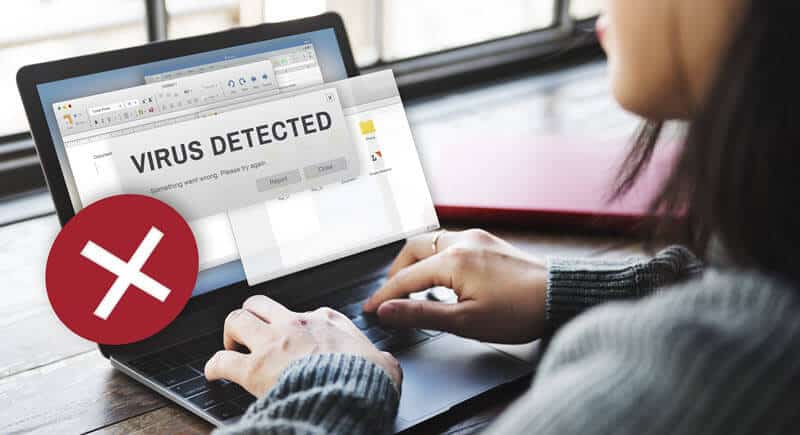Disclaimer: This post may contain affiliate links, meaning we get a small commission if you make a purchase through our links, at no cost to you. For more information, please visit our Disclaimer Page.
Most of us, by this point, is using a cloud of some kind, but some information warrants an external device. The external device has almost become a hard copy of our generation, I would argue.
You know how and where you keep everything and there’s a certain comfort to the tangible element.
But what happens when you’re trying to transfer your files over to your trusty external device and you come across this: A Device Attached To The System Is Not Functioning.
You could quickly become the non-functioning party in this scenario. But before you lose your ability to function i.e freak out, take a look at the list below.
You will more than likely find your cause — and even the solution!
Related Reading: Second Monitor Not Detected On Windows 10 – Top 5 Quick Fixes
Table of Contents
Potential Cause 1: The Defective Cable
So simple, so common. We are not kind to our cables. There is old internet lore that by the age of 30, we all have a drawer full of unknown cables.
This means that the fact that you have the right cable to begin with sets you apart (or you’re not yet 30. Wait, none of us are above the drawer.)
Try not to forget: the cables deserve our respect. Even the high quality, name-brand cables, have an expiration date.
How to respect your cable:
Don’t wrap it too tightly, give it some air to breathe. Wrapping it tightly puts strain on its ‘joints’, causing the plastic coating to fray where the wire meets the base.
Even before it snaps completely (which can happen) the power is weaker and the cable itself can be dangerous.
Don’t pull it out roughly, for similar reasons as above.
The Solution: Try a different cable. We told you it was simple, but it’s also the first thing to rule out.
Potential Cause 2: Virus Attack
Digging a little deeper now we come to a software issue: the virus attack. Just like our bodies, when there’s a virus eating away inside, systems go down.
Your device might not be functioning because the virus is pulling its energy elsewhere.
Virus’ come from basically anywhere. The internet is a highway of different files, some safe, some not.
Sometimes it can be impossible to know if a file is safe or not. Other times we don’t even know the file has come into our computer as it may have been attached to a website, or a movie.
Even clicking on a link on Instagram could infect your system.
This isn’t fear-mongering, it’s just the reality of the net. And that’s why we arm ourselves with the solutions.
The Solution: You can scan your system for suspicious files at any time. Not just when encountering an error. How? With SFC and DISM tools.
SFC, or System File Checker, scans files to check for inconsistencies. Usually, it’s able to pick up inconsistencies that account for system issues. When it doesn’t, you turn to DISM.
The Deployment Image Services Management works similarly to the SFC, but next-level.
How you’re going to use SFC and/or DISM to identify — and solve — your error code:
- Return to your ‘Command Prompt (Admin)’ — same process as above.
- Type sfc /scannow command and press Enter.
After giving the ‘scan’ command and pressing enter, type in the following commands; Don’t forget to be careful and press enter between each of them.
- DISM.exe /Online /Cleanup-image /Scanhealth
- DISM.exe /Online /Cleanup-image /Restorehealth
Get ahead of the issue. Knowledge is power.
Read Article: How To Find IP Address On Mac
Potential Cause 3: Outdated Software
Do you ever feel like you’re being punished for not updating your software? Why do things just suddenly stop working just because there’s a new operating system out?
Conspiracy theories aside, your software may no longer be compatible with all the things you used to be able to do. Or it’s just tired. Either way, it’s old.
I’ve been known to be a huge advocate of ‘turning it on and off again’ but sometimes that does not suffice. In fact, if you do that in place of upgrading (definitely done that) it can slow down your machine’s performance.
Listen, you don’t need to be updating your software with every update available. Updates, as opposed to upgrades, come out as soon as a glitch is fixed, or a new feature is developed.
It’s ok to wait for a few updates before catching up with the latest. It’s when we let it go for too long that it starts to become a problem, as the little glitches turn into bigger issues.
Control Panel > Device Manager > expand Device Manager > select your device > hold on device > select update driver.
If it’s more than the software and it’s the entire operating system that is outdated, you can run the SFC as detailed above.
Potential Cause 4: Check your Phone
Have you ever considered that maybe the computer is not the issue? Maybe it’s the external device?
It takes two to tango, and although the error code ‘A Device Attached To The System Is Not Functioning’ appears on your computer, it may still be an issue connected to the external device. It may be as simple as unlocking the phone or going into sharing settings on your tablet.
If you’re having problems with your external device, you might want to consider your local fix-it.
Together At Last:
While transferring files, it’s important to remember that both your hardware and software play a role, and more likely than not, the two did not come together.
You’ve given your hardware attention, given your software attention, and now that your external device is functioning appropriately and playing nice with your system, you can go back to your general function too!


